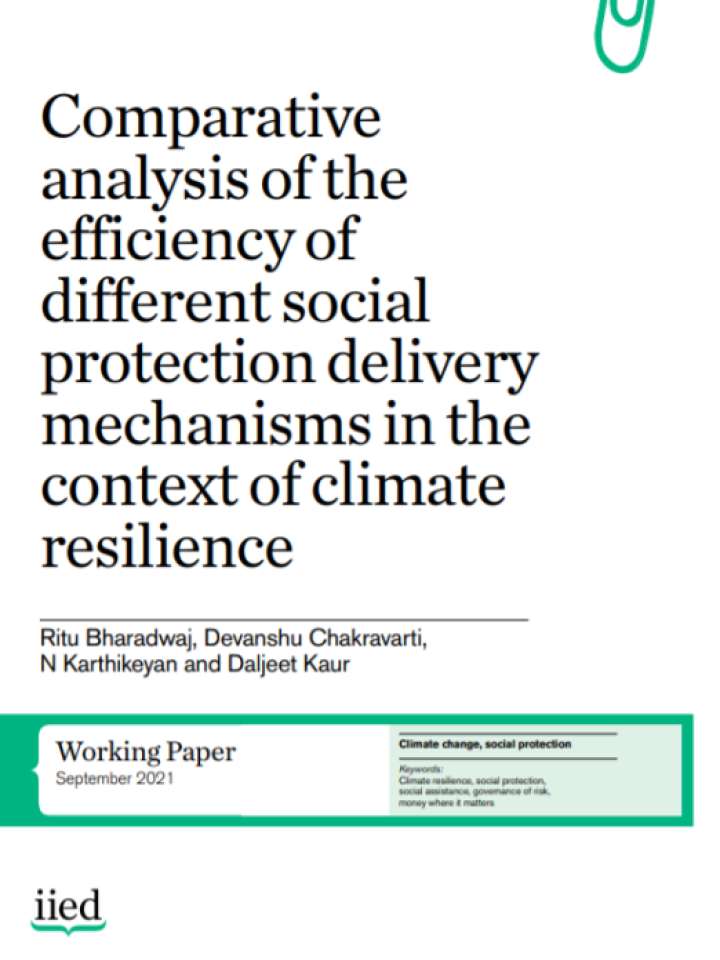Comparative analysis of the efficiency of different social protection delivery mechanisms in the context of climate resilience
This paper attempts to analyse the efficiency and effectiveness of the various social protection delivery mechanisms with reference to climate resilience, and also examines the sufficiency of social protection finance in meeting climate resilience and sustainable development outcomes. Evidence from research on existing programmes shows that, with some adjustments, social assistance can help communities better absorb the effects of climate risks, adapt to climate impacts, and transform their capacities and strategies to address growing climate stresses. Globally, the benefits of social assistance programmes reach close to 25% of the vulnerable. In 2017, more than US$500 billion was spent on social assistance in lower- and middle-income countries.
This paper finds that the value of social assistance investments can be maximised through the right mix of delivery instruments most suited to the local context. For higher-risk category countries, like Ethiopia and India, social assistance instruments that require lower average per capita transfer amounts, and produce higher benefit-cost ratio, could be implemented along with cash transfer programmes. Shock-responsive mechanisms must be integrated within existing social assistance instruments in the face of shocks similar to COVID-19. Safety nets must be woven through global businesses and supply chains and global brands can support the creation of social safety nets for people working in their supply chains in LDCs, through insurance, health cover and employment security. Climate finance must be leveraged to support climate resilience instruments within social assistance programmes while domestic resources mobilised for universal social assistance coverage.
Explore further
